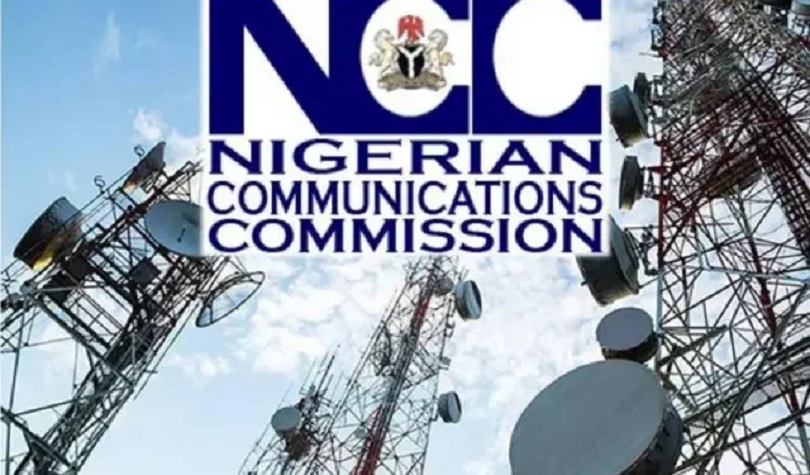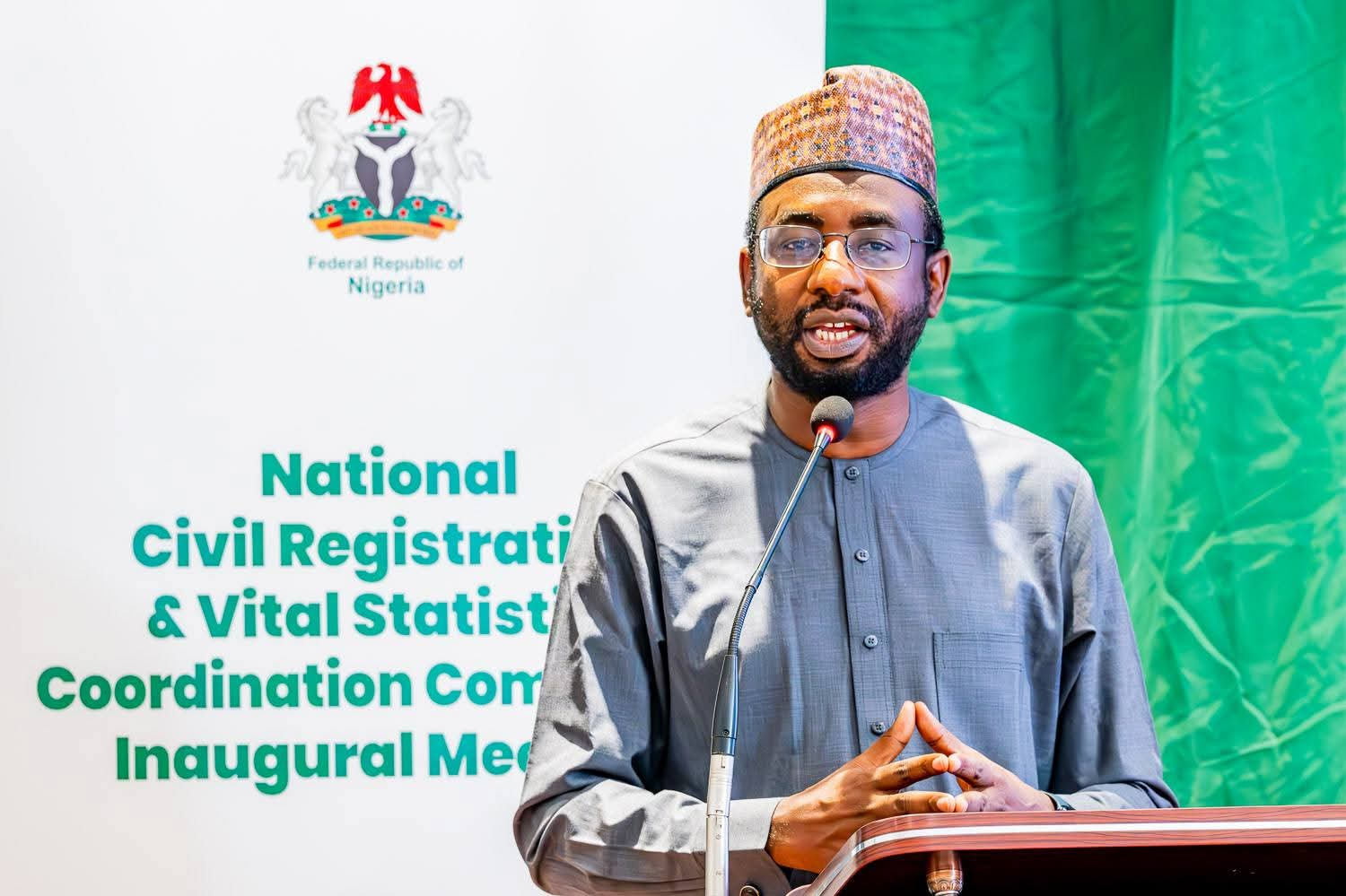Telecom
‘Broadband Access in Nigeria’ Not Broad Enough, Not Qualitative Enough- Report

By peter oluka
Despite Nigeria’s 5+ submarine cables, carrying a combined capacity of 10+ TBPS, Nigeria still suffers from low broadband penetration.
In an attempt to increase penetration, the Federal Government’s Presidential on Broadband drafted a Broadband plan which was eventually enacted into a policy with goal of increasing fixed broadband penetration to 30% by 2018.
Meanwhile, with a reported Broadband penetration of approximately 21%, Nigeria seems to have met her National Broadband Plan target of reaching “by the end of 2017, a fivefold increase in broadband penetration over the 2012 penetration rate (of between 4-6%)”.
However, in its Policy Brief dated June 2017, titled: ‘Broadband Access in Nigeria: Not Broad Enough, Not Qualitative Enough’ Paradigm Initiative Nigeria (PIN) passed a damning verdict on the state of ‘Broadband Nigeria’; although the International Telecommunications Union (ITU) putting fixed broadband penetration in Nigeria at 0.01%, admittedly, the bulk of this broadband access has been through mobile broadband.
Internet penetration in Nigeria is put at 47%, according to the ITU.
According to the Nigerian Communications Commission (NCC), there were just over 90 million active mobile internet subscriptions on GSM and CDMA networks as of April 20175.
The report by PIN continues: Although Nigeria’s broadband plan envisaged that mobile broadband would be the most popular medium for the actualization of the plan, perhaps it was overly optimistic in its plans for the rollout of Terrestrial wireless networks, Fibre, Cable, Digital Subscriber lines and Satellite Networks, given Nigeria’s historic challenges with infrastructure development.
As earlier noted, fixed broadband penetration is 0.01% and infrastructural and policy challenges has limited the effectiveness of Nigeria’s only real claim to a national broadband network – mainly 3G and lately 4G Mobile broadband, resulting in resulting in poor quality of service.
Nigeria’s Systemic Infrastructure Obstacle
Speaking on the backdrop of the report, Babatunde Okunoye, research assistant at Paradigm Initiative, said that Nigeria’s low fixed broadband penetration must be set against the background of the Terabytes of broadband capacity which lay underutilized at landing points of International submarine cable on the Lagos coast.
The successful outlay inland of this capacity, the report observed, has been hindered by factors including unfavourable government policies such as multiple taxation and Right of Way requirements.
“In a country that could only boast 200,000 telephone lines 40 years after independence for a population of over 120 million, Nigeria had always had challenges delivering infrastructural dividends to its citizens.
“The now rested state monopoly Nitel, despite not having to contend with the limiting factors earlier mentioned, and empowered by the biggest spender in the economy (the Federal Government), could only deliver fixed telephone lines to a privileged few (200,000 or 0.001% of the population) over 4 decades”, the report said.
This infrastructure challenge was not peculiar to Telecoms alone, but was also seen in the poor state of critical infrastructure in Nigeria.
Against this background of historical poor infrastructure delivery outcomes in Nigeria, it can be argued that the National Broadband Plan (2013-2018), in its far-reaching plans for an elaborate broadband infrastructure deployment across the nation was overly optimistic in its timeframe.
This is particularly true in its plan for city-wide fibre deployment, which can be as involved as providing fixed telephone line access.
As envisaged by the National Broadband Plan, the best hope of delivering on Nigeria’s broadband plan is by ensuring that the spread of Nigeria’s 3G and relatively new 4G mobile networks which has largely helped broadband penetration to reach 21% is widened and the Quality of Service (QoS) improved.
The Nigerian government is already taking steps to deepen broadband penetration through the licensing of six slots of the 2.6 GHz spectrum for the deployment of 4G services in 2016 and the planned licensing of broadband services on the 5.4 GHz spectrum bank and allocation of 70/80 GHz band (E-band), amongst other plans.
The success of Nigeria’s GSM network is itself quite a story because in some respects, it defied Nigeria’s infrastructure challenges, partly being because it did not require the same level of elaborate layout of infrastructure house to house and street to street as required in fibre deployment for instance; a number of Telco Towers sufficing for each coverage area – plus backhaul infrastructure.
With exactly two years of the Broadband Plan left (2017-2018) and the fixed broadband penetration rate at 0.01%, there is an urgent need to revise the National Broadband Plan for fixed broadband, the report recommended.
“The remaining 2 years also provides the opportunity to solidify the gains of the national spread of mobile broadband.
“A key metric which captures the quality of Internet access in Nigeria is the Average Connection speed, put at 3.9 Mbps (compared to a global average of 7.2 Mbps), according to Akamai’s ‘State of the Internet’ Q1 2017 report”.
“This cannot be divorced from the state of Network infrastructure in the country. In the United States and the United Kingdom for instance, there is an average of 1 Telecommunications base station for 2,300 and 2,100 customers respectively”, the PIN report suggests.
In Nigeria however, there are about 39,000 Telecommunications base stations for a population of over 180 million, an average of 1 for 4,600 consumers7.
The state of Network infrastructure is centrally linked to the poor Quality of Service (QoS) in mobile broadband delivery in Nigeria.
According to the Customer satisfaction survey conducted by the Nigerian Communications Commission (NCC) in 2012, nationally, there were marginally more respondents reporting that their connection speed was “slow or very slow” than those reporting it as “fast or very fast”.
This policy brief, which follows Paradigm Initiative’s first policy brief on broadband9, stresses that the years 2017-2018 provides another opportunity to revise the National Broadband Plan, perhaps extending the target year beyond 2018 in respect of fixed Broadband (fibre), while rallying to meet the targets for mobile broadband in terms of Quality of Service (QoS) as also noted in the plan.
A major hindrance to the scheduled outlay of terabytes of fibre broadband from the Nigerian coast to the Nigerian interior has been the policy bottlenecks of multiple taxation and right of way requirements which have burdened ISPs. In this regard, it is important to call on the Federal Government to get its priorities right.
“The proposed plan for second and third national satellites, in our opinion, is wasteful, because resources allocated for this project can be used to broaden Internet access. We are of the opinion that the government can do with 1 or 2 satellites for now – there is no empirical evidence the current satellite (NigComSat-1) has given a good return on investment and financing planned for a third satellite can be channelled instead to funding tax breaks and right of way abstentions for ISPs. A nation that cannot in the 21st century provide reliable broadband access to the majority of its citizens has no business in space in the first place.
“Another immediate priority for the government will be to formulate policies that will prioritize a marked increase in the spread of 3G/4G networks – given they are the only realistic route for achieving some of the goals of the Broadband Plan within the current timetable.
“The licensing of six slots of the 2.6 GHz spectrum for the deployment of 4G services in 2016 was therefore a step in the right direction. Indeed, the Broadband plan notes that, At this juncture 3G (or HSPA) mobile broadband technology provides the fastest way for the delivery of universal mobile broadband access in Nigeria now and in the near future, while targeting LTE technology for future high capacity networks.
“3G and LTE are indeed the most ideal solutions for leapfrogging Nigeria to high speed broadband delivery
“Therefore all hands must be on deck to ensure that the worthy goal of connecting every Nigerian to a superfast and reliable broadband network is realized.
“Nigeria’s 47% and 21% Internet penetration and broadband penetration rates respectively can be partly explained by the concentration of telecom signals in highly populated urban areas and the neglect of the rural countryside where broadband affordability and consequently demand is a challenge. [Source: OpenSignal 3G and 4G LTE Cell Coverage Map]
“The figure above shows gaps between the National Planned and National Existing Broadband Fibre Infrastructure (37,104 km) in Nigeria. This challenge has been identified by the National Broadband Plan as critical to achieving broadband penetration target of 30% by 2018. [Source: Universal Services Provision Fund/Nigerian Communications Commission]”.
Telecom
Airtel Africa Partners Starlink to Launch Direct-to-cell Service in 14 Markets

Airtel Africa said on Tuesday it has partnered with SpaceX to introduce Starlink’s direct-to-cell satellite technology to all its 14 markets.

The satellite-to-mobile service will begin across Africa in 2026, with data for select applications and text messaging, Airtel Africa said in a statement.
Airtel Africa customers with compatible smartphones in regions without terrestrial coverage will have network connectivity through Starlink.
The deal also includes “support for Starlink’s first broadband Direct to Cell system, with next-generation satellites that will be capable of providing high-speed connectivity to smartphones with 20x improved data speed,” Airtel Africa said.
Last month, Kyivstar, Ukraine’s largest mobile operator, became the first in Europe to launch Starlink’s direct-to-cell satellite technology in a bid to keep millions connected amid wartime blackouts and disrupted infrastructure.
Telecom
NCC Blames NOGASA for Abuja Outage

Nigerian Communications Commission (NCC) has blamed the actions of the National Oil and Gas Suppliers Association (NOGASA), for the recent telecom blackout experienced in the Abuja area.

NCC
A statement issued on Friday by the Head, Public Relations, NCC, Mrs. Nnenna Ukoha, while acknowledging the challenges and impact of the degraded Quality of Service (QoS) in the area on subscriber experience, stated: “The challenges are a result of the activities of the National Oil and Gas Suppliers Association (NOGASA), which disrupted diesel supplies to sites with the attendant telecommunications services outages in Abuja.”
She however disclosed that the telecommunications sector regulator is committed to ensuring restoration of seamless communication services to the affected area, and all Nigerians at large, and recognizes the importance of reliable power supply for the provision of optimal telecommunication services.
“The Commission is collaborating with major stakeholders and licensees to address these challenges, largely caused by disruption to diesel supply affecting IHS Nigeria Limited, the colocation provider responsible for powering Airtel and MTN base stations in the affected areas.
“The NCC is actively engaging with relevant stakeholders to address the diesel supply issues and explore sustainable solutions.
“The Commission urges all parties to work together to collaboratively resolve these challenges swiftly by removing the diesel supply bottlenecks affecting critical telecommunications infrastructure, arising from NOGASA’s actions.
Ad image
“In the face of these challenges, we reiterate our commitment to fostering a conducive environment for the growth and sustainability of telecommunications services in Nigeria.
“We are taking proactive steps to facilitate dialogues between the impacted service providers and other stakeholders to promptly resolve the diesel supply concerns that have negatively impacted service quality.”
While assuring that the Commission remains dedicated to effectively managing the situation and will keep the public updated on progress towards restoring full telecommunication services in Abuja, Mrs. Ukoha appreciated subscribers for their patience.
“We thank telecommunications subscribers for their understanding and patience during this period and reaffirm our commitment to delivering high-quality telecommunications services nationwide,” she said.
Telecom
NITDA Charts Path for Kano as Innovation Hub

Mallam Kashifu Inuwa Abdullahi, Director-General of the National Information Technology Development Agency (NITDA), has called for a fundamental shift in Kano State’s economic strategy, urging stakeholders to embrace innovation, technology and collaboration as the drivers of growth in the 21st century.

Mallam Kashifu Inuwa Abdullahi, Director-General of the National Information Technology Development Agency (NITDA)
This is contained in a press statement e-authored by the Director of Corporate Communications & External Relations at NITDA, Hajia Hadiza Umar.
Speaking at the Kano Startup Weekend, Mallam Abdullahi acknowledged Kano’s long-standing reputation as the commercial nerve centre of Northern Nigeria and the wider Sahelian region, noting that its history of trade, enterprise and human capital provided a solid foundation for future growth.
Abdullahi emphasised that while these strengths powered Kano’s success for centuries, the modern economy now offered even greater opportunities through innovation and technology.
He described innovation as the process of transforming ideas into impactful solutions through commercialization, stressing that when ideas were effectively deployed, they created value, solved societal challenges and generated sustainable economic growth.
He noted that Kano’s large market, strategic location and vibrant entrepreneurial culture placed it in a strong position to take advantage of innovation-driven opportunities.
According to him, “Innovation is the process of taking an idea from inception to impact. Invention on its own is a cost centre, but when you commercialise an idea, when you turn it into a product or service that solves a real problem and creates value, that is when you begin to drive economic growth and inclusion.”
He noted that the state hosted numerous degree-awarding institutions across federal, state and private ownership, providing a strong base for human capital development.
However, the NITDA DG expressed concern that these institutions often operated in isolation from industry, with research outputs rarely translating into commercial or industrial applications.
He explained that innovation did not happen in silos and stressed the need for a strong, interconnected ecosystem that brought together academia, industry, startups, entrepreneurs and government.
According to him, universities should conduct research informed by industry needs, industries should leverage research to improve productivity and competitiveness, and startups should serve as the bridge that converted ideas into market-ready solutions.
The NITDA boss further encouraged entrepreneurs to leverage technology to build businesses that could grow beyond local markets, explaining that innovation-driven enterprises had the power to scale rapidly, create jobs and position Kano competitively at both national and global levels.
According to him, digital platforms and emerging technologies now made it easier for startups to reach wider markets and develop solutions that were previously unimaginable.
“You can start your business here in Kano, but your thinking must be global from day one. Technology has removed barriers. With the right skills and platforms, a startup in Kano can build solutions that serve not just Nigeria, but the world,” he noted.
Highlighting NITDA’s ongoing interventions, its Director-General outlined the Agency’s commitment to building national innovation capacity through targeted human capital development programmes.
He cited the Digital Literacy for All (DL4ALL) initiative, which aimed to equip Nigerians across all segments of society with essential digital skills, and the 3 Million Technical Talents (3MTT) programme, designed to produce a pipeline of globally competitive technical professionals in areas such as software development, data analysis and emerging technologies.
He said, “Through DL4ALL, we are ensuring that Nigerians at all levels have the basic digital skills needed to participate in the digital economy, while 3MTT is deliberately building a pipeline of globally competitive technical talents who can drive innovation, create jobs and attract investment.”
Abdullahi explained that these programmes were key pillars of President Bola Ahmed Tinubu’s Renewed Hope Agenda, which prioritised skills development, innovation, job creation and inclusive economic growth as pathways to national prosperity.
According to him, empowering Nigerians with digital and technical skills was essential for building a resilient economy capable of competing in the global digital landscape.
“President Tinubu’s Renewed Hope Agenda is about investing in people, empowering them with relevant skills and creating opportunities for inclusive growth.
“At NITDA, we are using digital skills and innovation as tools to translate that vision into real economic impact for Nigerians,” he said.
The NITDA boss urged all stakeholders in Kano to work together to build a functional innovation ecosystem that could unlock the state’s vast potential and expressed confidence that with the right mindset, strong collaboration and sustained investment in digital skills and innovation, Kano could reclaim its historic leadership role and emerge as a major innovation and entrepreneurship hub in Nigeria and beyond.

 E-Financial3 days ago
E-Financial3 days agoSupreme Court Clears Fidelity Bank in ₦225bn Sagecom Saga

 E-Financial3 days ago
E-Financial3 days agoPreventing Financial Crimes Amid Mounting Insecurity: Why Following the Money is Now a Survival Imperative

 E-Financial3 days ago
E-Financial3 days agoUnion Bank Clinches Top Workplace Practice Honour at Sustainability Awards

 Broadcasting2 days ago
Broadcasting2 days agoDavido, Babajide Sanwo-Olu, Karl Toriola, Others To Be Honoured At The Most Influential People of African Descent Awards In Lagos

 News2 days ago
News2 days agoSiBAN New Executive Council to Champion Vision for Nigeria’s Digital Economy

 E-Financial2 days ago
E-Financial2 days agoTax Reform or Financial Exclusion? The Trouble with Mandatory TINs

 General News2 days ago
General News2 days agoNITDA DG Calls for Innovation-Led Economic Rebirth @ Kano Startup Weekend

 Telecom2 days ago
Telecom2 days agoNCC Blames NOGASA for Abuja Outage



























